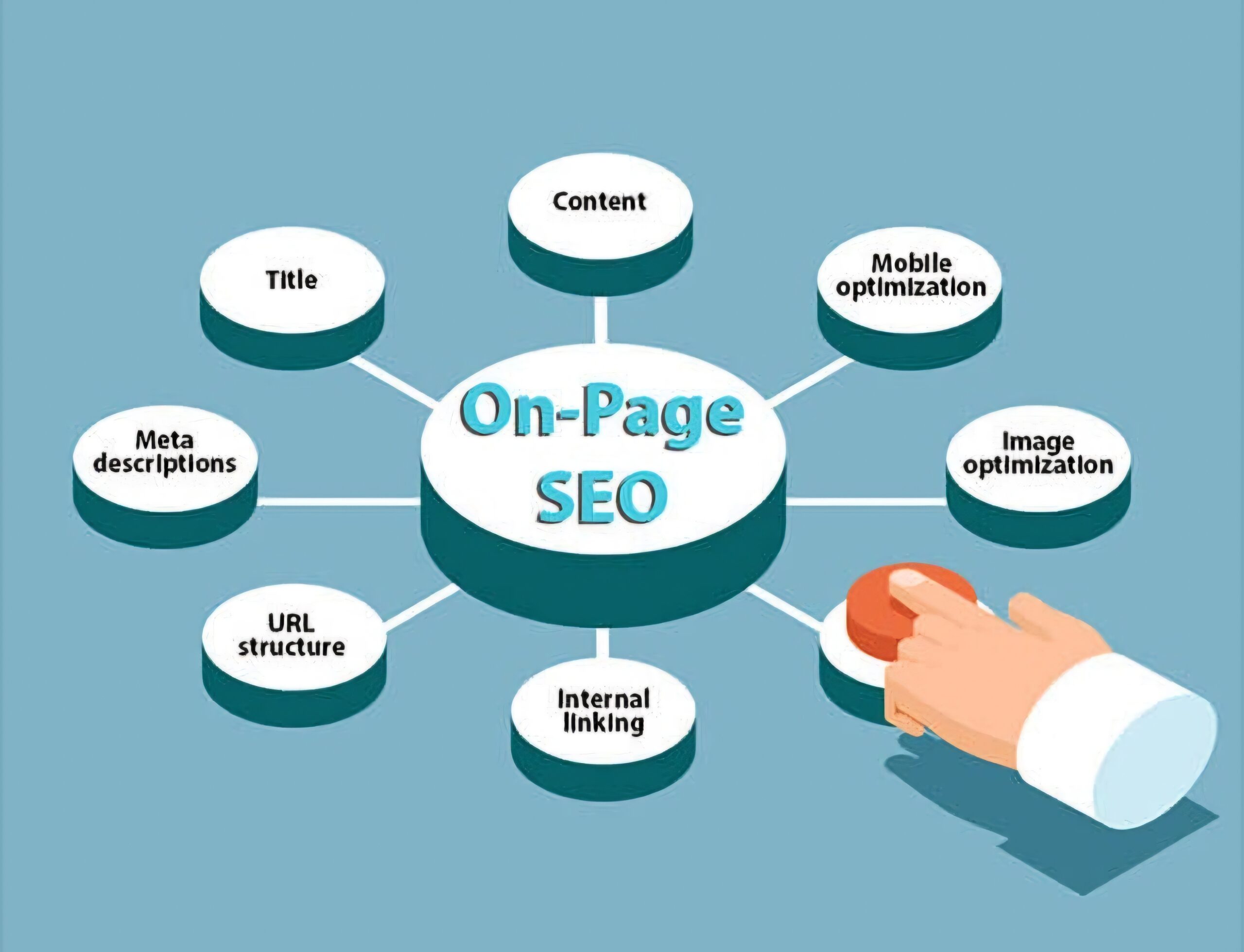
Search Engine Optimization (SEO) is the practice of enhancing a website to improve its visibility on search engines like Google. While there are many aspects to SEO, On-Page SEO focuses on optimizing elements on the website itself. Let’s delve into the key components illustrated in the infographic.
Content
Content is the king when it comes to On-Page SEO. Quality content that is informative, engaging, and relevant to your target audience is essential. It should be well-researched, incorporate appropriate keywords, and provide value to the reader. Regularly updating your content helps keep it fresh and relevant.
Title Tag
The title tag is one of the most important on-page SEO elements. It tells both search engines and users what your page is about. It should be concise, include target keywords, and be compelling enough to attract clicks. A well-crafted title tag can significantly impact your site’s visibility and ranking.
Mobile Optimization
In today’s digital age, a significant portion of web traffic comes from mobile devices. Ensuring that your website is mobile-friendly is crucial for improving user experience and SEO. Responsive design, fast load times, and easy navigation are key elements of mobile optimization.
Image Optimization
Images can enhance the visual appeal of your website, but they also need to be optimized for SEO. This includes using descriptive file names, adding alt text, and compressing images to reduce load times. Well-optimized images can improve your site’s performance and visibility on search engines.
Internal Linking
Internal linking involves linking to other pages within your website. This helps search engines understand the structure of your site and establish a hierarchy of importance. It also improves navigation and encourages visitors to explore more of your content. Proper internal linking can distribute page authority and enhance user experience.
Meta Descriptions
Meta descriptions are brief summaries of your page’s content that appear in search engine results. They should be compelling and include relevant keywords to entice users to click on your link. While meta descriptions don’t directly impact rankings, they play a significant role in driving click-through rates and improving overall SEO.
Url Optimization
A clean and organized URL structure can make it easier for search engines to crawl and index your site. URLs should be concise, descriptive, and include relevant keywords. Avoid using long strings of numbers or special characters. A well-structured URL improves usability and can positively impact your site’s ranking
Activation and Implementation
The hand pressing a red button in the infographic symbolizes the activation or implementation of these On-Page SEO strategies. It’s a reminder that understanding these components is just the first step; putting them into action is what will ultimately drive results.
Conclusion
Effective On-Page SEO is a blend of various elements working together to improve your website’s visibility, user experience, and search engine ranking. By focusing on quality content, mobile optimization, image optimization, internal linking, URL structure, meta descriptions, and title tags, you can create a robust foundation for your website’s success. Remember, SEO is an ongoing process that requires continuous monitoring and adjustments to stay ahead in the ever-evolving digital landscape.




